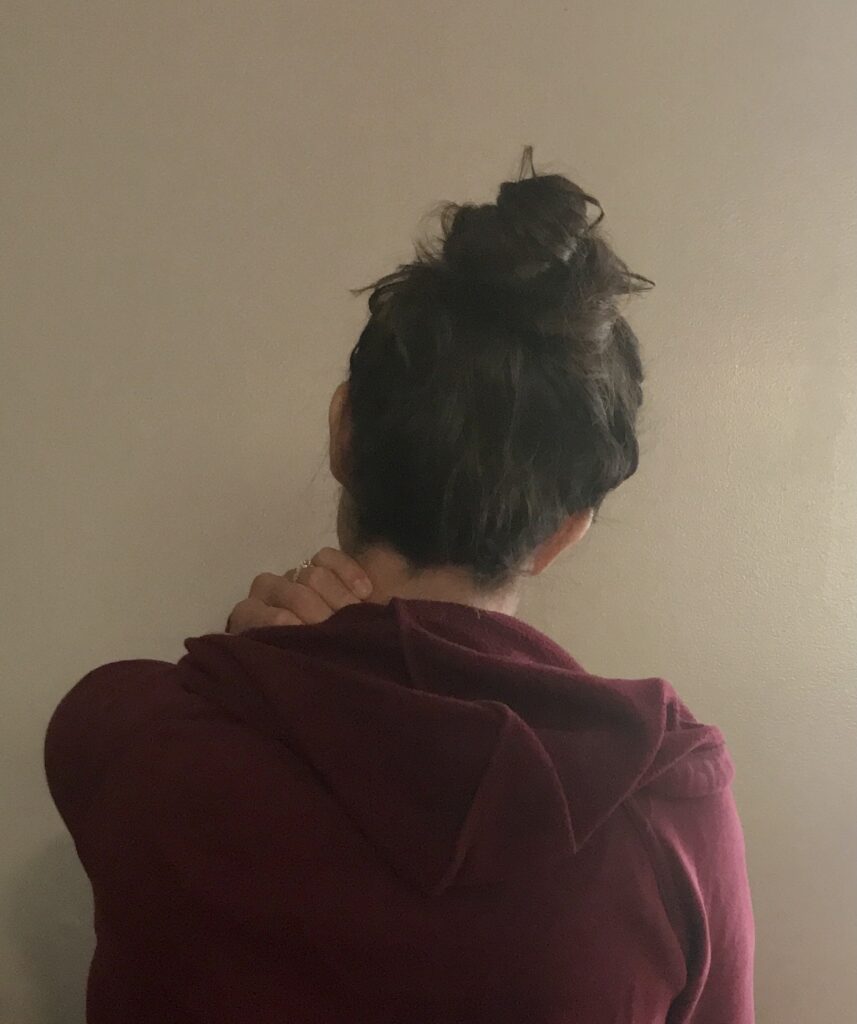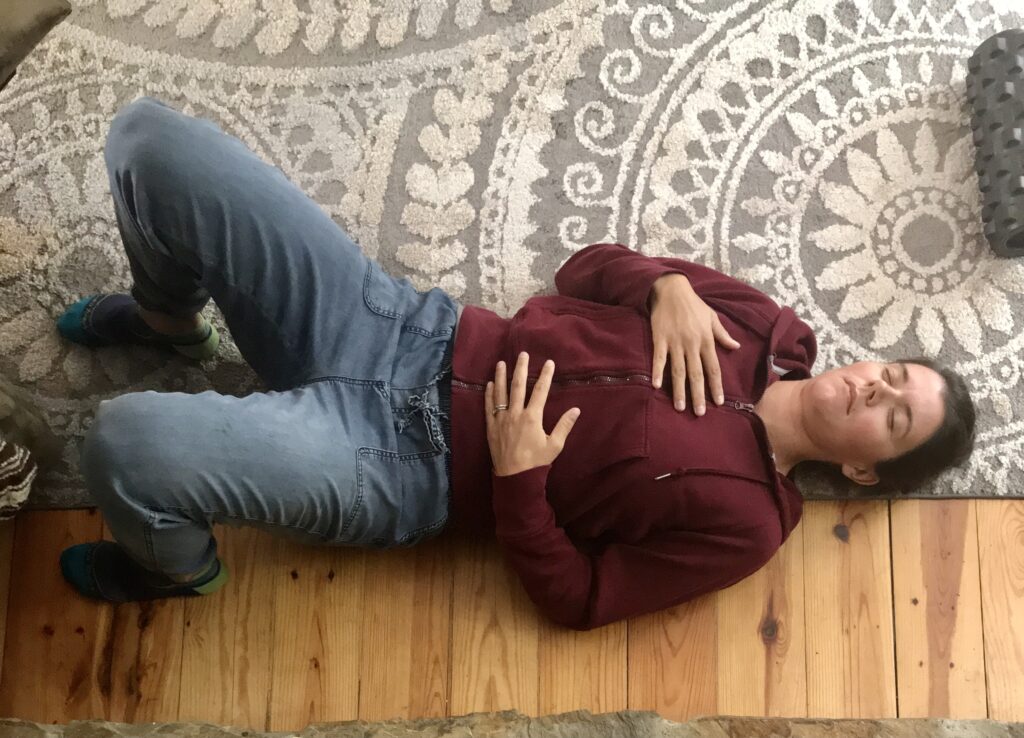
Chronic neck pain can be debilitating and incredibly challenging to live with. It is a multifactorial issue that can be created or exacerbated by a variety of causes. The impact of neck pain on our lives makes finding tools that can decrease neck pain very important. Breathe Work, is one tool that can help you.
Chronic Neck Pain
While chronic neck pain is not the most common muscular-skeletal issue, it does impact many individuals. For those impacted by chronic neck pain, you know the discomfort that it can cause. Chronic neck pain has been shown to have many negative effects, including the following.
- decreased work productivity
- lack of ability to focus
- increased headaches
- general discomfort and pain
- lack of mobility
- sleep problems
Risk Factors For Chronic Neck Pain
The day-to-day chronic pain is very wearing. It can be a result of a variety of reasons. Risk factors include the following.
- chronic stress
- anxiety and/or depression
- hypermobility and ehlers danlos syndrome(EDS)
- problems falling and staying asleep
- fibromyalgia
- whiplash related injuries
- multiple autoimmune diseases
Breathe Work For Chronic Neck Pain
Commonly, those with chronic neck pain find relief with a combination of tools. Improving posture, strength, and movement can help improve how the area functions. Breathing has also been shown to help decrease neck pain, especially when in conjunction with movement improvements. In an article published in PLOS One in 2022, researchers found that breathing reeducation, also known as breath work, can improve chronic neck pain.
What is Breathing Re-Education?
Breathing re-education means learning a new way to breathe. While we all breathe every day, there are multiple ways to breathe, and adjusting your breathing can help to decrease chronic neck pain. In particular, learning how to breathe utilizing your diaphragm can help.
The diaphragm is a muscle that sits just under the rib cage, it spans the area like a balloon. Ideally, when you breathe the diaphragm contracts, decreasing pressure in the chest and drawing air into your lungs. However, many develop different breathing patterns.
The most common, and problematic breathing pattern includes using what are called accessory breathing muscles. Accessory breathing muscles include multiple neck and shoulder muscles. This looks like a lifting of the shoulders and/or tensioning of the neck to inhale. However, with diaphragmatic breathing, the diaphragm and muscles between the ribs contract to breathe in, leaving the shoulders and neck relaxed during breathing. While secondary breathing is useful, it ideally is not our primary mechanism for drawing breath.
During breathing re-education, clients learn to breathe utilizing their diaphragm. Which impacts chronic neck pain due to the lack of neck and shoulder engagement during breathing and the neurological stress reduction also found in diaphragmatic breathing.
Integrating Breathe Work To Reduce Chronic Neck Pain
Learning to breathe utilizing the diaphragm takes time and practice. There are multiple methods that you can use. Below you will find instructions for an effective exercise that is simple but can feel hard if it is new to you.

- Find a comfortable position layin on your back.
- Place one hand on your chest and the other on your stomach.
- Take a few breaths, paying attention to where you feel movement.
- By relaxing your breathing, slowly try to pull your breath into your abdomen. You will feel your abdomen lift as you inhale and lower as you exhale.
Remember this takes two skills, one is drawing the breath into your abdomen while the other is allowing the shoulders, neck, and chest to remain relaxed as you breathe. If this feels hard closing in on impossible, that’s ok! It is completely normal for it to feel foreign, uncomfortable, or simply frustrating.
Like any skill, it takes time to learn, and building a habit of practicing can help to learn the skill over time. Learning to integrate new movement and healthy habits into your life can feel difficult, but you can do it! For some, hiring a coach can help. I work with clients varying in age and skill, helping them to build a solid foundation of skills. Skills like breathing, movement patterns, strength, and stress management can all be part of what we work on together. If you are interested in learning more, email me at chelseawhalen.trainer@gmail.com to set up a complimentary consultation.